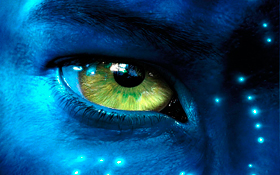Cinematography is a relatively new art which, actually, is only in its early life. That said, 116 years that have elapsed since the first cinema show on the Boulevard des Capucines in Paris included numerous both evolutionary and revolutionary moments having completely changed modern cinematography. It is not only about technological innovations but, rather, about dramatic change of the cinema language. The insight into the first century of cinema will, perhaps, help answer the question what it is in for in the future.
Cinematography is a relatively new art which, actually, is only in its early life. That said, 116 years that have elapsed since the first cinema show on the Boulevard des Capucines in Paris included numerous both evolutionary and revolutionary moments having completely changed modern cinematography. It is not only about technological innovations but, rather, about dramatic change of the cinema language. The insight into the first century of cinema will, perhaps, help answer the question what it is in for in the future.
A retrospective study
It’s taken for granted that in the 20th century cinematography survived two revolutions after the introduction of first sound and later color.
On September 17, 1922 in Berlin the demonstration of the first talkie “Der Brandstifter” took place. After that the Hollywood businessmen the brothers Warner, the founders of the one of the largest in the world film studios “Warner Bros.” acquired sound recording equipment and in 1927 released the film “The Jazz Singer”, that ushered in the beginning of the end of the silent cinematography. The film was awarded the honorable Oscar prize for “the creation of the first sound movie that produced a revolution in the industry” (It should be noted that the Oscar ceremony of 2011 witnessed the triumph of the film “The Artist” of a French film director Michel Hazanavicius, a black-and-white silent motion picture devoted exactly to the introduction of sound in cinematography which, actually, can be regarded as going back to the roots. The first color film was prompt to appear. In 1935 there was released the motion picture “Becky Sharp” directed by Rouben Mamoulian. Thus, already in mid-thirties the technologies allowed cinematographers to create color talkies. It significantly increased the ascendancy over spectators and ultimately granted cinematography the status of a full-fledged art (it should be reminded that initially the Lumiere brothers treated their invention as a kind of a sideshow failing to fully understand its potential).
The latest technological breakthrough took place not long ago. A big fan of 3D-technologies James Cameron in 2009 directed the motion picture “Avatar”, thus unequivocally proving that digital special effects can perform not only a decorative function in a science fiction and futuristic fantasy film but also a narrative one due to which spectators were able to practically physically visit the planet of Pandora. The huge box office of “Avatar” (world BO receipts surpassed $2 bn.) brought about a fantastic boom in 3D-format. Now every second Hollywood blockbuster is made in 3D-format while 3D-spectacles are becoming a traditional element of a film review. As any novelty (no need to remind of the heated debates that took place after the introduction of sound and color in cinematography) the new format which is now all the rage has given birth not only to producers’ enthusiasm but also to naturally determined questions and disputes. The main objection to 3D-technologies is that they more often than not introduce nothing new in motion pictures but instead perform the only decorative function that attracts spectators. Each side has its rationale, and it makes no sense to deny one obvious fact that the world cinematography has irreversibly changed after the release of “Avatar”.
Regarding the changes in the cinema language it’s necessary to point out that unlike the technological revolutions these changes have been of an evolutionary nature and related to the one of the most important functions of cinematography as it is: the reflection and analysis of the world community’s lifestyle changes over the course of the 20th century. The mid-century great Hollywood style, the post-war Italian neo-realism, the “new French wave” and the Soviet social realism dramatically changed the means of cinematographic expressiveness giving a meaning to specific historical events such as the Great Depression, the Second World War, the war in Vietnam, etc.
In for the future
Can the assumptions about the future of cinematography development be built on the above facts? Presumably, yes, with one important reservation that these are only trends, some guiding lines that can be currently traced.
It’s obvious that by and large the 3D-technology revolution unfolding before our eyes will only enhance in the near future its influence over the filmmaking process. On the one hand, new opportunities allow film directors realize on the screen the ideas they could hardly dream of before. On the other, such freedom is very often capable of decreasing the level of artistic ambitions of a filmmaker. Today, this dilemma has triggered off heated debates. For example, one of the biggest Hollywood directors Christopher Nolan publicly put into question the importance of the 3D-technology saying that with a good film script one can easily do with a 2D-image. That said, it’s quite likely that in 10-15 years time the 3D-format will ultimately take an upper hand. With the new technologies being continuously developed, it is quite logical to suppose that the existing know-how will only be perfected to achieve deeper immersion of a spectator into 3D- and 4D cinema space.
Another important contributing factor is growing geopolitical role of China which already now echoes in business strategies of largest Hollywood and Chinese film studios. Tough protectionist policy of the Chinese leadership (the number of Hollywood premieres in China is strictly regulated) brings its fruits, allowing the state itself to produce large-scale film projects. The BO receipts from these projects exceed sometimes $100 and even $200 million which is comparable with the box offices of many Hollywood blockbusters. However, early in 2012 the restraints that served well national cinematography were removed, but it’s unlikely to dramatically change the existing situation. Taking into account the number of potential film viewers in the country the only challenge facing China now is the construction of new movie theatres amounting ideally to tens of thousand. When this task is accomplished (and there seems to be no doubt about it) China will be able to successfully compete with Hollywood inevitably resulting in redistribution of the spheres of influence and financial flows inside the world filmmaking industry.
India has got not less potential however its original closeness and the focus of the Indian filmmaking industry mainly on domestic film viewers are unlikely to allow it to go global. In order to achieve it will be necessary to fundamentally review India’s own cinematographic tradition. Such a scenario seems now most unlikely.
European cinematography will become a “safe haven” for an auteur film making aimed, above all, at the creation of artistic values, and only then at a commercial success.
What niche in this changing system of coordinates will be occupied by Russia? Russian cinema will remain pleasant-to-see “exotic production” for the Western audience oriented mostly towards concrete film directors. In technical terms Russian cinematography lags much behind similar Hollywood film production, and it’s still not clear how this gap could be narrowed in the not-too-distant future. Our mainstream - genre motion pictures usually successful with the spectators - doesn’t always fulfill its aim in the internal market. It’s hard to imagine that an American, Italian or a French spectator will show more interest in a movie than our compatriots who has initially been the target audience of the film. The situation is much better in the so-called festival plane. Russian auteur film directors (Alexander Sokurov, Andrey Zviagintsev, Alexey German, Nikita Mikhalkov, Boris Khlebnikov, Alexey Popogrebsky and others) are well known and respected in the world.
The growing from year to year specific weight of the Internet in mass media space is likely to find reflection not only in the methods of film promotion but also partly, perhaps, replace a visit to a movie theatre. The gaining more and more popularity Internet-movie theatres where every visitor can free of charge and absolutely legally watch recent film releases may become a strong competitor to their off-line prototypes. Of course, rapid technological development that reduces the difference between the former and the latter to a comfortable minimum should be taken into account. We should also remember about pirate torrent trackers providing content illegally that doesn’t hold back the lion’s share of cinema lovers across the world.
There should be expected much fewer changes in artistic devices, manner of presentation and basic principles of the cinema language. As it was said above, undoubtedly, technical innovations are capable of introducing new palette in cinematography but at the end of the day the main function of the art of cinema - to reflect, filter and analyze the reality – is barely to be seriously changed in the short- and even long-term perspective. In this regard it is the 21st century – second century of cinematography – that is doomed to create the system of coordinates (somebody will, perhaps, say that it happened already at the end of the 20th century) inside which cinematography will harmonically exist as an independent and, most importantly, self-sufficient art equally with literature, theatre and painting.
But, perhaps, the main conclusion to be made from such prognostications and reflections is the following: despite the difficulties, political contexts and objectively existing economic problems cinematography will continue to develop both intensively and extensively. It all means that we have reasonable grounds to proclaim the 21st century the century of cinema.







